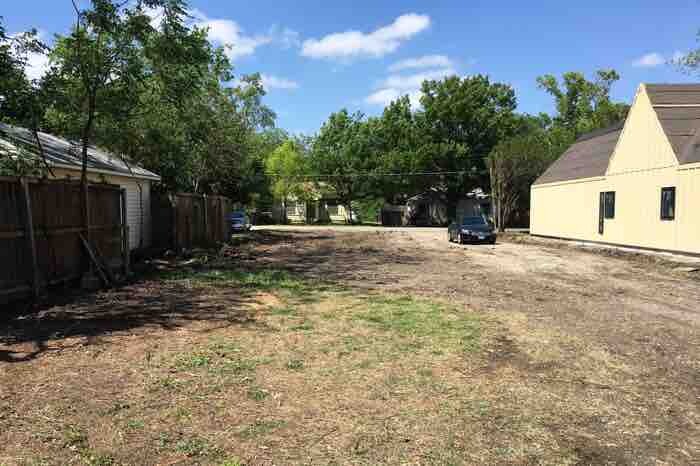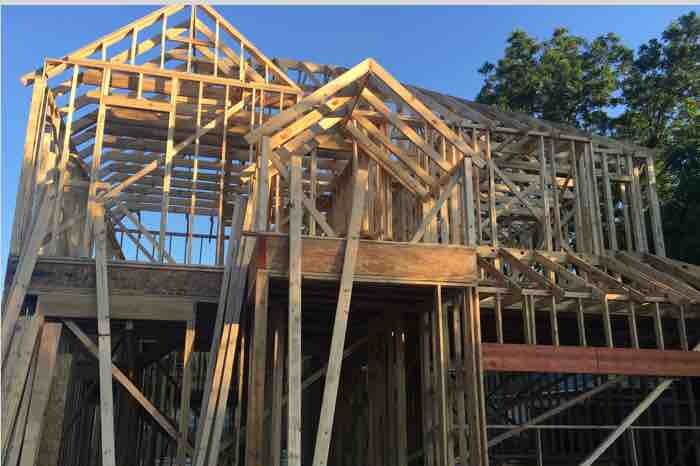New to the Building Process?
Here's a step-by-step guide drawing on our decades of expertise.
1. Site Selection

Most have heard the old adage that real estate is all about location, location, location. Certainly those are the first three factors to look for when it comes to finding the perfect building site. However, other factors will have just as much impact on the cost of your new home as well as your homeownership experience.
Do your research. If the location is in a floodplain, building may be impossible. Be sure to check for any deed restrictions. Several more established neighborhoods have enacted conservation districts or neighborhood stabilization overlays. These areas often feature restrictions on setbacks, building materials, garage locations and even second stories. Occasionally, residents in these areas can be resistant to redevelopment.
Mature trees are desirable and add immense value to a home. However, if they are too close to the building site and must be removed, consider the cost of removal and any fees that may be assessed by the local municipality. In some instances, these fees may exceed $100 per inch in diameter of the tree!
Many desirable locations in the Dallas area are undergoing extensive redevelopment. This involves removing an old, dilapidated home and building a new one in its place. If you are considering this, be sure to get a rough estimate of the cost to remove the home and start fresh with a clear lot. The cost will depend on the foundation the home is built on, materials it is made of and any environmental hazards present. In many cases, demolition and removal can be accomplished for under $10,000.
A flat lot with less drainage will usually require less preparation.
2. Preparing Lot & Laying Strong Foundation

Clay soils commonly found in North Texas can exert tremendous force on homes and buildings. Soils can expand up to 75 percent when wet or contract the same amount during dry months, creating forces of up to 14,000 pounds per square foot.
When you are looking for a lot, it is advisable to obtain a SOILS report from a licensed engineer. The report will indicate, among other things, the PVR (Potential Vertical Rise) in the soil, which will determine the type of foundation and soil treatment needed for pouring a strong foundation.
Reliable foundations can be designed for any type of soil, but more active soils will typically require a more expensive design. The upfront costs may be more, but the damage a good design can help prevent will pay for this investment many times over. This is certainly a situation where one size does not fit all. Diligent builders will use a site-specific design provided by a licensed engineer who has evaluated the soil conditions on site.
In addition to expansive clays, water is another adversary to contend with when it comes to site design. Here, once again, a little planning goes a long way. Builders typically level out the subgrade (existing dirt) and bring in some select fill dirt to properly elevate the lot to provide positive drainage away from the home.
3. Framing & Rough Stage

Next to getting the keys, this is perhaps the most exciting stage of the construction process for homeowners. At this point, you begin to see your vision quickly go from plan to reality.
From a planning perspective, this is also a critical time. Go room to room and imagine yourself living there. Where do you want your electrical outlets and light fixtures to be? What about that new sound system you’ve always dreamed of; where should the speakers go? At framing stage, before the drywall goes on, these items are much easier to accommodate.
Ask your builder if you or they can take extensive photos and video once the electrical, HVAC, media and plumbing are roughed in. In the future, if you ever need to work behind your walls, those photos will be of tremendous help to any contractors and to you from a cost and safety standpoint. Knowing and having input on what goes behind the walls is another advantage of building a new home.
At this stage of construction, builders are most concerned about air sealing and moisture prevention. Those two work hand-in-hand. A well-designed building envelope, well sealed and well protected from the elements, goes a long way towards reducing operating costs and maintenance concerns created by moisture. Water is able to pass through brick within seconds! Fortunately, there are several tried and true building systems that can keep moisture at bay and maintenance money in your wallet.
Thanks to advances in building technology, the days of relying on drafty homes to dry themselves out as air passes through are long gone. Dallas BA builders are taught to “build it right and ventilate it right.” That means providing the tightest building envelope possible coupled with proper ventilation and humidity control. The result is that newer homes can be heated and cooled with much smaller and more efficient equipment than those built a generation ago.
4. Finish Out

This is the home stretch. Things may not seem to move as fast as they did during the framing and rough in process, but this is when your house truly becomes a home.
Many interior finish out selections are made early on in the building process, especially when working with a production builder. Your choices here are endless, which is why it can be helpful to select from just a few predetermined options.
In the absence of these options, many homeowners derive design ideas from the internet and television. While these are inspirational and entertaining, they may not tell the whole story. Generally, the more unique an item is, the more expensive it will be. Here is where an interior designer or decorator can be of tremendous help bringing your ideas together within your budget.
Speaking of budgets, when deciding where to splurge or save, consider prioritizing things such as insulation, electrical needs and media pre-wiring that cannot be replaced or installed as cost effectively down the road. Although windows can be replaced, they can never be flashed (sealed) as well as they can be when they are newly installed. Avoid spending more than necessary on items that go in and out of style or “green bling” that offers marginal efficiency gains at significant upfront cost.
